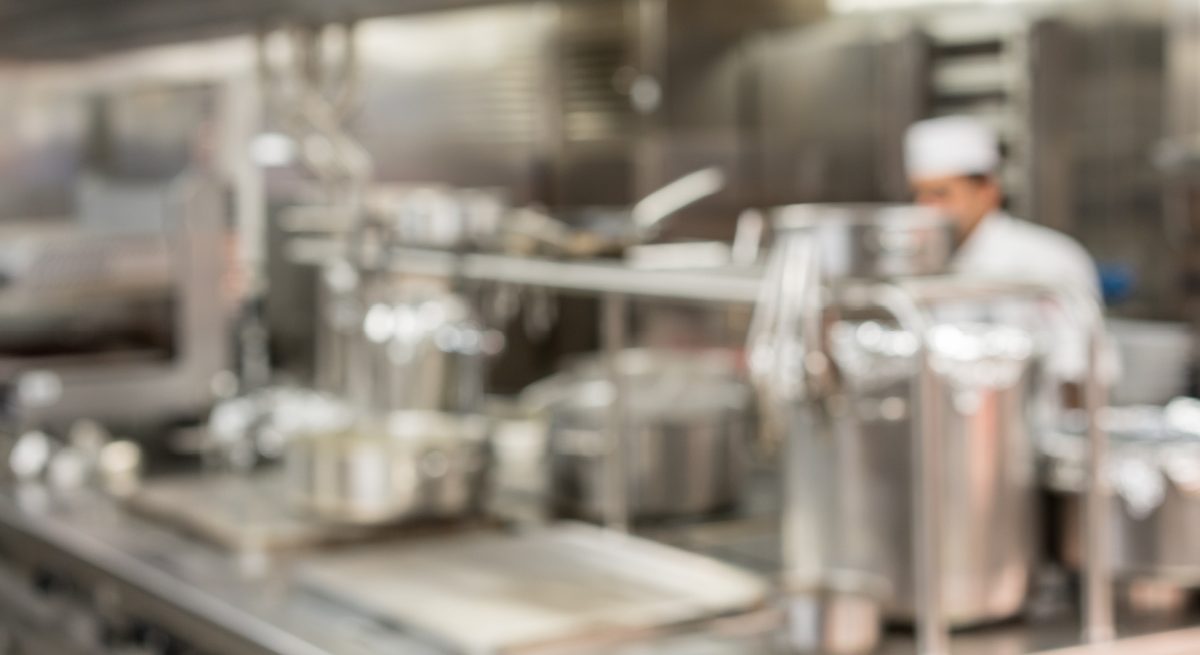Attributes to Consider for a New Ghost Kitchen Location
4 Min Read By Matt Giffune
The unprecedented rise of food delivery has ushered in an appetizing trend for profit-hungry restaurateurs: the ghost kitchen. Untethered by the need for brick-and-mortar eatery space, ghost kitchens are helping food brands gain traction with consumers interested in buying meals without the expectation or need for a traditional “dining out” experience.
How popular is food delivery? McKinsey estimates that the market has tripled since 2017. QSR Magazine reports that 53 percent of adults consider food takeout or delivery essential to the way they live their lives. Consequently, Euromonitor predicts that the ghost kitchen concept could become a $1 trillion food industry segment by 2030. It’s no wonder that a report from Technomic and the National Restaurant Association shows that half of restaurant owners have already folded a ghost kitchen angle into their real estate models.
The Sizzling-Hot Benefits of the Burgeoning Ghost Kitchen Concept
There’s little doubt that ghost kitchens present attractive possibilities to existing and future restaurants and brands. Perhaps the most important is the ability for restauranteurs to cut down on both labor and real estate costs. Without the need for front-of-house staff, a restaurant can put money into paying for chefs, cooks, and food preparation. This reduces the need for as many employees.
Ghost kitchens are welcome alternatives because they don’t require large footprints or visibility from the real estate perspective. Many ghost kitchen settings are in out-of-the-way areas and even industrial parks. They don’t have signage because they don’t rely on foot traffic or branding. Their purpose is to do one thing and do it well: Fulfill orders that come through digital sites and apps. That’s it. Especially for restaurant chains with multiple regional locations, merging into centralized ghost kitchens can provide significant savings.
Another ghost kitchen benefit is that multiple entities can share a single kitchen. For instance, some ghost kitchens work with two or more brands. Other ghost kitchens are actually part of regular restaurant kitchens — the restaurant contracts with other eateries to help fill orders.
A final advantage is that ghost kitchens enable restaurant brands to test new tastes. As one CNN article reports, Boston Market and Applebee’s are two recognizable restaurants that have played around with different menu items through ghost kitchens during the pandemic.
How to Open a Ghost Kitchen With Confidence
If you like the sound of lower overhead costs and improving your profit margins, a ghost kitchen could be the right choice for your restaurant. You’ll want to maintain a high degree of quality, of course. And if you do, you might find that you can reduce the typical barriers to entry that come with stepping into or expanding within the restaurant industry. The first step is finding the right ghost kitchen location to allow agility and efficiency.
Below are some of the top factors to consider when you’re mulling the idea of a ghost kitchen for your restaurant or online-only brand concept. Remember that some restaurants are 100-percent cloud-based, which may appeal to you as a restaurateur eager to capitalize on consumers’ penchants for using third-party delivery apps. Regardless of how you intend to use your ghost kitchen, take the following attributes seriously.
1. Amenities and Functionality
Generally speaking, most kitchens need to be approximately 300 square feet to operate effectively. Even though ghost kitchens are skeletal counterparts to classic kitchens, they do need to be outfitted with the right amenities to fulfill food storage, preparation, and delivery expectations.
With this in mind, you’ll be on better footing if you know upfront what kitchen amenities are “nice to have” versus “need to have.” Don’t forget that the space needs to be adequate for delivery drivers to pick up orders and suppliers to restock quickly. Having a list of functionality must-haves will minimize your chances of picking the wrong location for your ghost kitchen.
2. Location, Location, Location
It may sound trite, but it’s worth repeating: Location matters, even when setting up a nontraditional ghost kitchen. Certainly, your ghost kitchen doesn’t have to be in a social hub. But it does need to be accessible to delivery drivers and your target patrons.
If possible, try to launch a ghost kitchen no more than three to five miles away from potential buyers. Be sure to assess your competitor saturation before signing any leases or contracts, though. And make sure you’ve differentiated your concept from what’s available via surrounding ghost kitchens.
3. Cost Analysis
Ghost kitchens don’t need house decorations, signage, tables, chairs, and cutlery. And your rent will be lower because you don’t have to set up shop in high-traffic downtown areas. Nevertheless, you can’t assume that you’ll be profitable sooner rather than later until you conduct a cost analysis.
While pulling together your cost analysis, weigh the ups and downs of various scenarios. Would it be helpful if you shared a ghost kitchen with another restaurant? Or worked with an existing brick-and-mortar restaurant to fulfill a limited number of menu items? Do you want to own the ghost kitchen lease or sublet it from another party? If you’re leaning toward the latter, you’ll find numerous companies ready to sublease their spaces to delivery-only restaurants.
Ghost kitchens aren’t entirely new. They’ve been around for a while. However, they’re having their day and changing how restaurateurs look at their restaurant real estate strategy and needs. If you’re not entirely sold on opening a ghost kitchen, give it a thorough second look. After all, this is one concept that’s spicing up the food industry.

